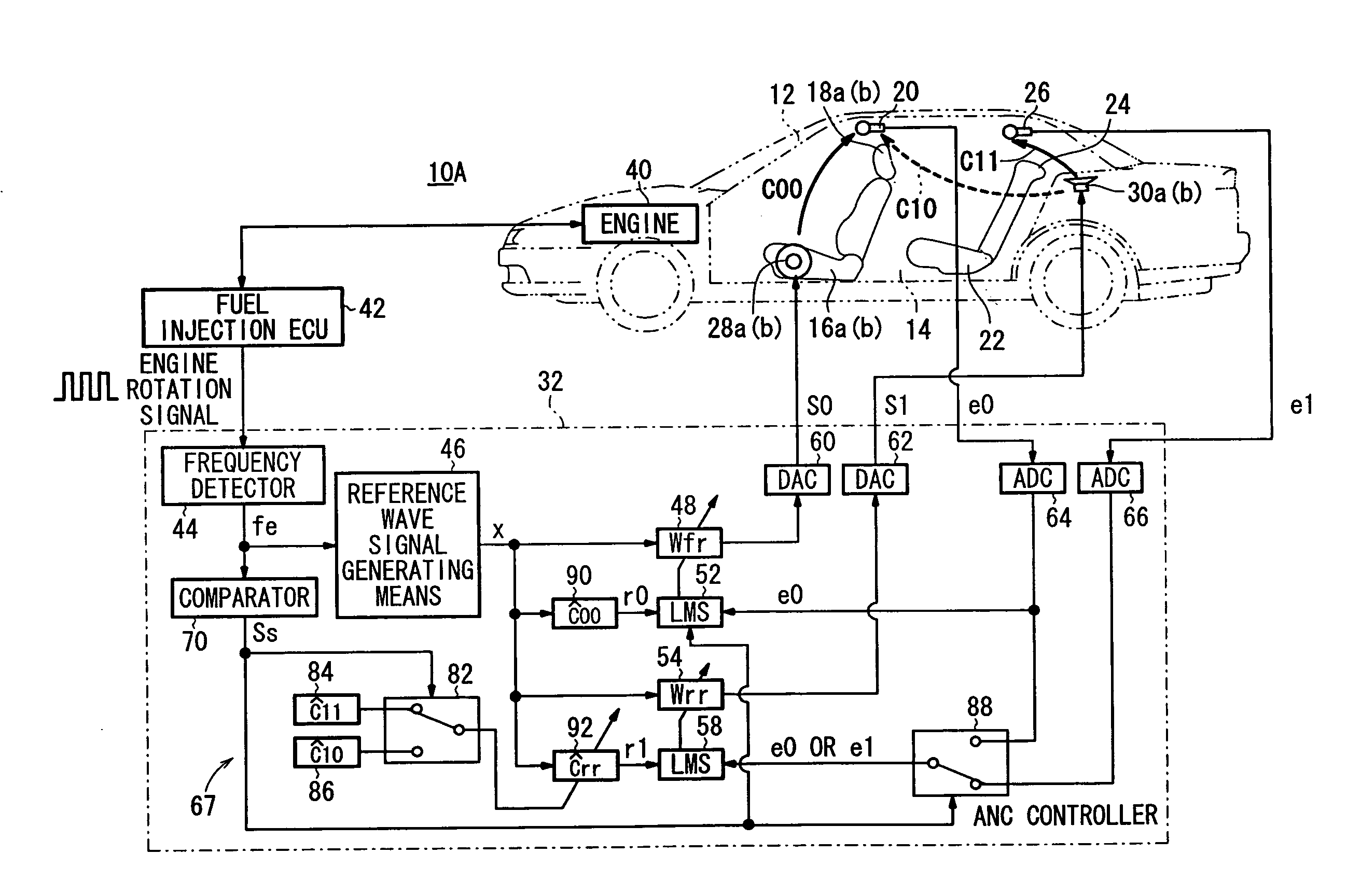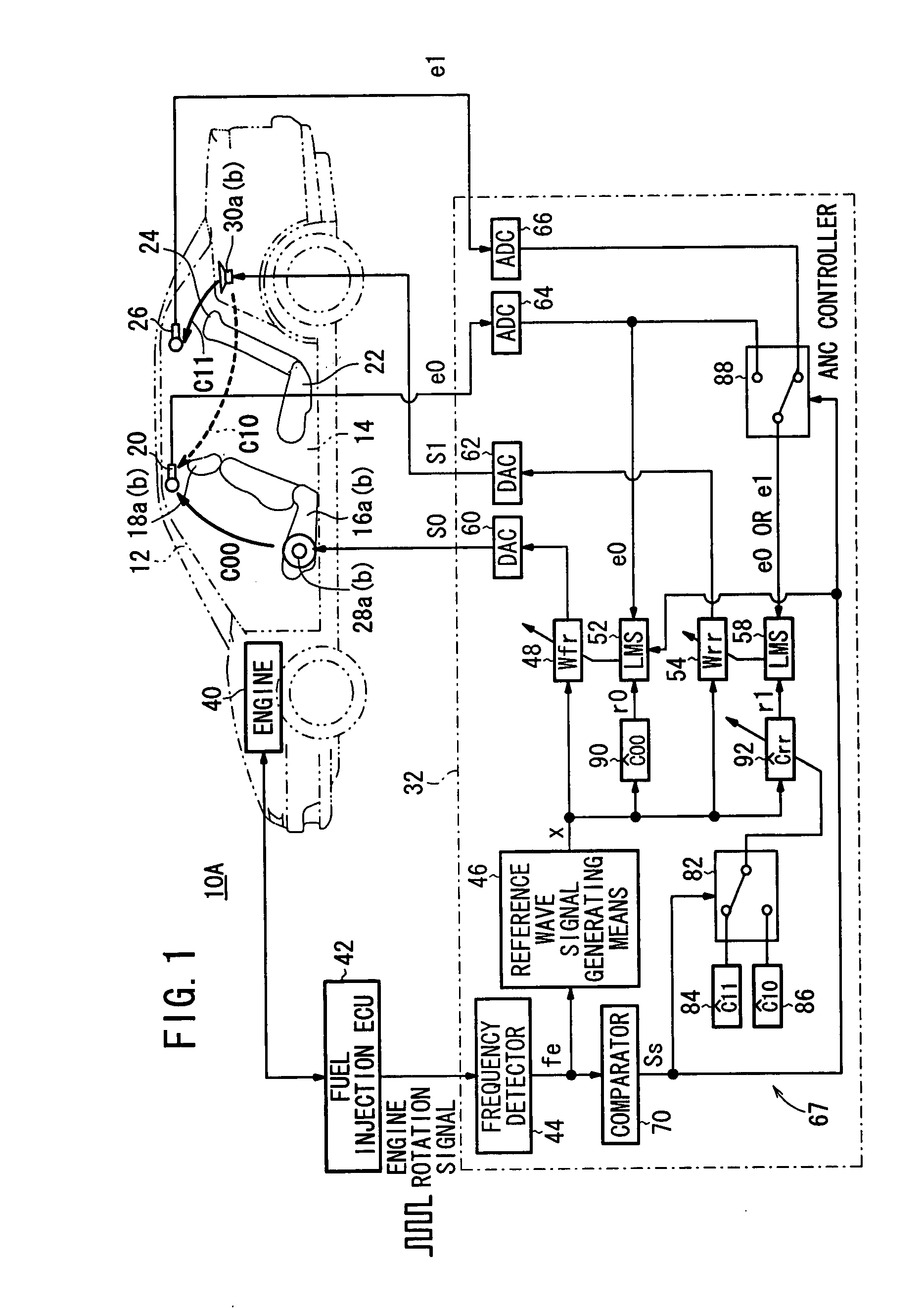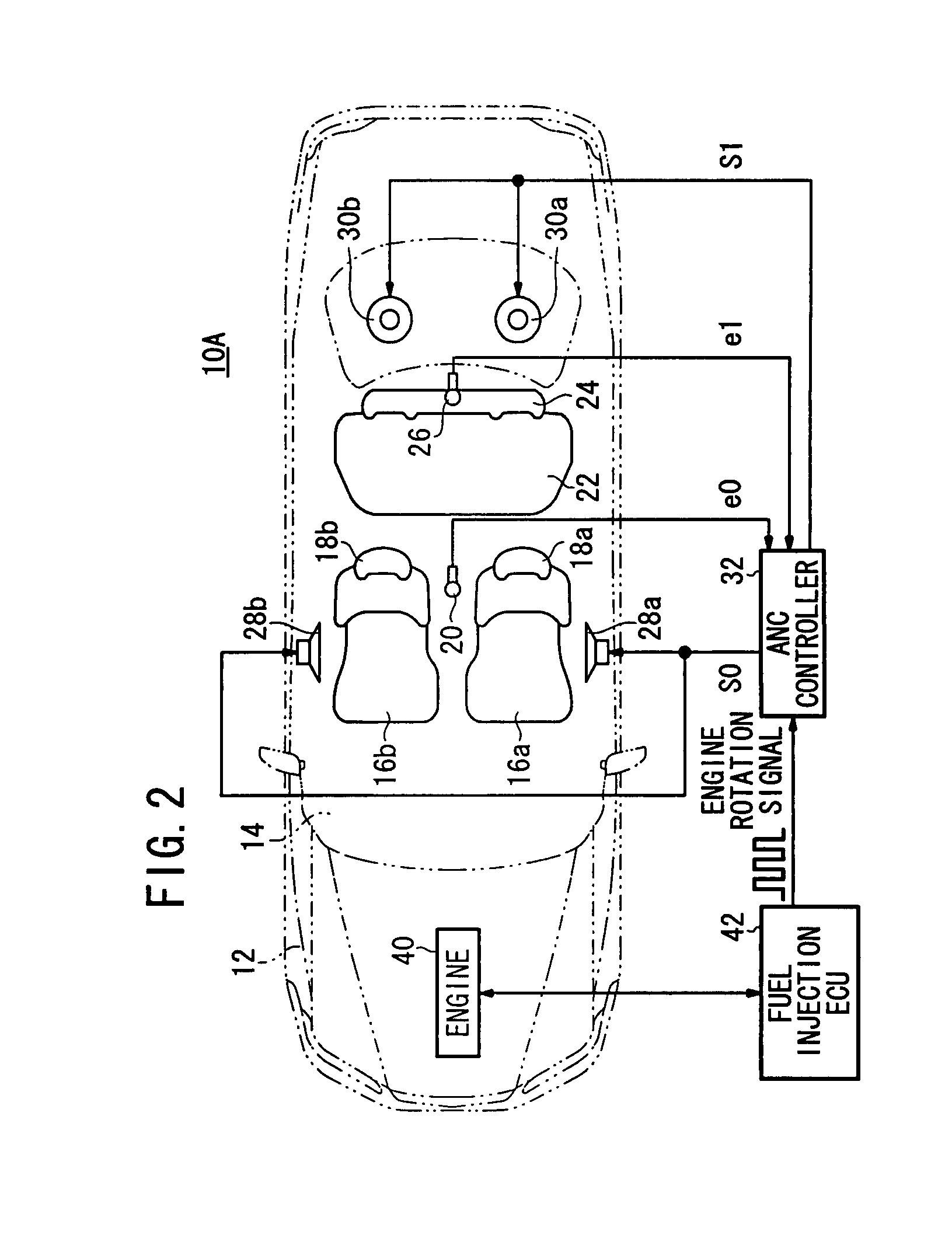Active vibratory noise control apparatus
a technology of vibratory noise and control apparatus, which is applied in the direction of active noise control, instruments, electrical transducers, etc., can solve the problems of high cost and complex configuration of the active vibratory noise control apparatus, and achieve the effect of reducing vibratory noise and simple arrangemen
- Summary
- Abstract
- Description
- Claims
- Application Information
AI Technical Summary
Benefits of technology
Problems solved by technology
Method used
Image
Examples
first embodiment
[0034]FIGS. 1 through 4 show an active vibratory noise control apparatus (hereinafter referred to as “ANC”) 10A according to the present invention, which is applied to reduce vibratory noise within a passenger compartment (space) 14 of a vehicle 12.
[0035]As shown in FIGS. 1 through 3, the ANC 10A includes a microphone (first error signal detector) 20 disposed on a roof lining near headrests 18a, 18b, i.e., near to an ear of a passenger (not shown), centrally over the front seats 16a, 16b in the passenger compartment 14, and another microphone (second error signal detecting means, second error signal detector) 26 disposed on a roof lining near a headrest 24, centrally over a rear seat 22 inside the passenger compartment 14.
[0036]The ANC 10A also includes a speaker 28a mounted on a left door near to the front seats 16a, 16b, a speaker 28b mounted on a right door near to the front seats 16a, 16b, and two speakers 30a, 30b disposed behind the rear seat 22. Alternatively, as shown in FIG...
third embodiment
[0067]An ANC 10C according to the present invention will be described below with reference to FIG. 6.
[0068]The ANC 10C is different from the ANCs 10A, 10B according to the first and second embodiments (see FIGS. 1 through 5) in that when the frequency fe reaches 140 Hz, the comparator 70 outputs a switching control signal Ss to the selectors 72, 78, 82, 88 and the filter coefficient updating means 52, 58.
[0069]The ANC 10C according to the third embodiment offers the same advantages as those of the switching means 67 of the ANCs 10A, 10B according to the first and second embodiments. In particular, the ANC 10C can reliably reduce engine noise within both the first and second spaces, near the front seats 16a, 16b and the rear seat 22 inside the passenger compartment 14, even when the frequency fe changes.
fourth embodiment
[0070]An ANC 10D according to the present invention will be described below with reference to FIG. 7.
[0071]The ANC 10D differs from the ANC 10B according to the second embodiment (see FIG. 5) in that only one microphone, i.e., the microphone 20, is disposed in the passenger compartment 14. Further, a selector 96 connects the memory 74 or the memory 86 to the correcting means 50 in response to the switching control signal Ss, and a selector (control signal supply switcher) 98 connects the DAC 60 or the DAC 62 to the adaptive filter 48 in response to the switching control signal Ss. The ANC controller 32 is free of the adaptive filter 54, the correcting means 56, the filter coefficient updating means 58, the selector 78, and the ADC 66. The ANC 10D also differs from the ANC 10B in that the first space is defined as a space near the front seats 16a, 16b within the passenger compartment 14, whereas the second space is defined as a space near the rear seat 22 within the passenger compart...
PUM
 Login to View More
Login to View More Abstract
Description
Claims
Application Information
 Login to View More
Login to View More - R&D
- Intellectual Property
- Life Sciences
- Materials
- Tech Scout
- Unparalleled Data Quality
- Higher Quality Content
- 60% Fewer Hallucinations
Browse by: Latest US Patents, China's latest patents, Technical Efficacy Thesaurus, Application Domain, Technology Topic, Popular Technical Reports.
© 2025 PatSnap. All rights reserved.Legal|Privacy policy|Modern Slavery Act Transparency Statement|Sitemap|About US| Contact US: help@patsnap.com



